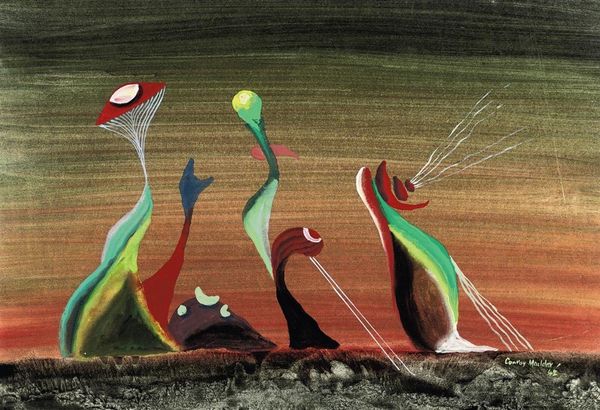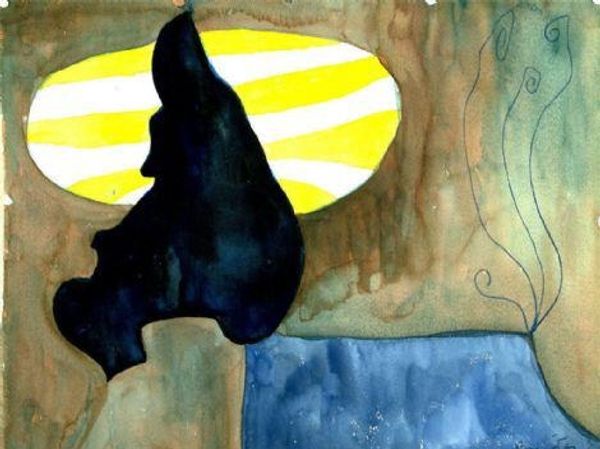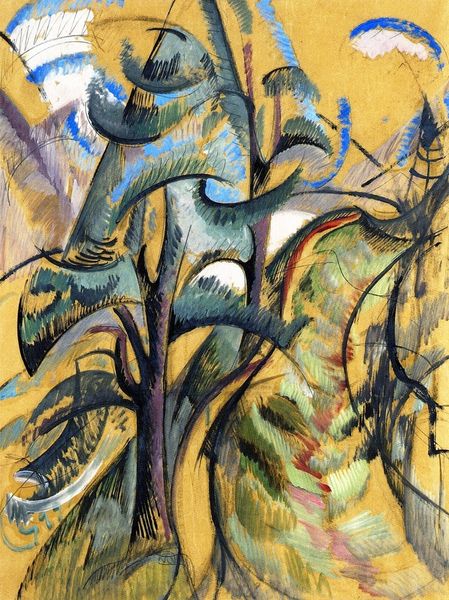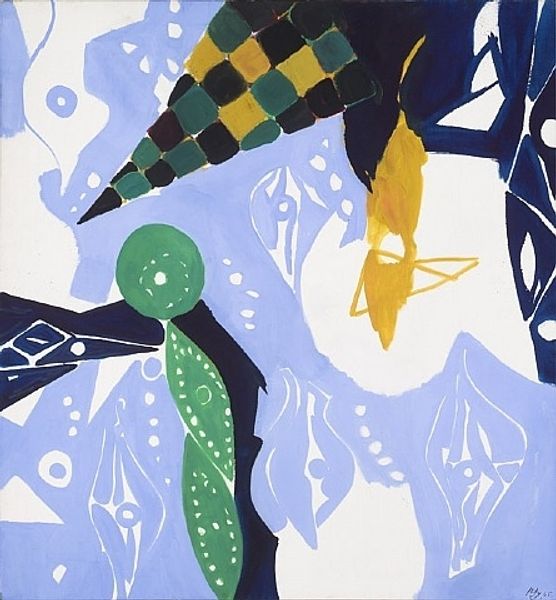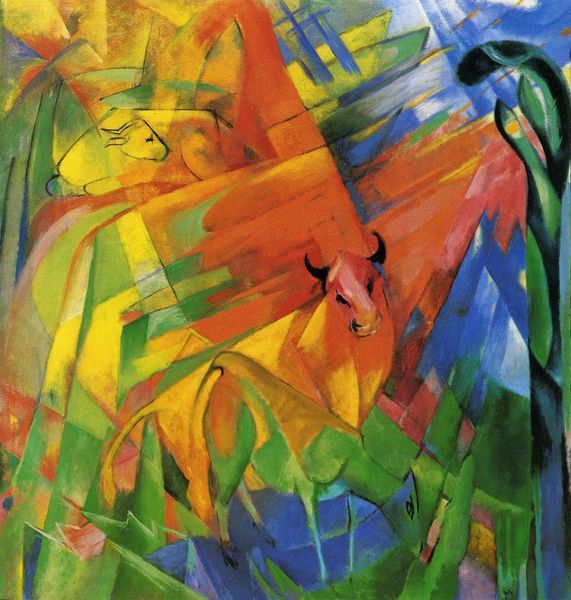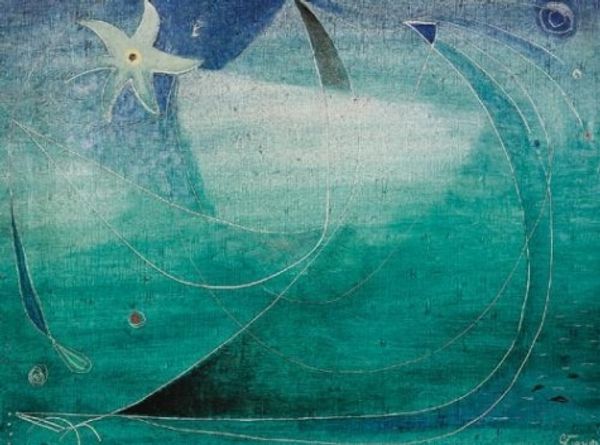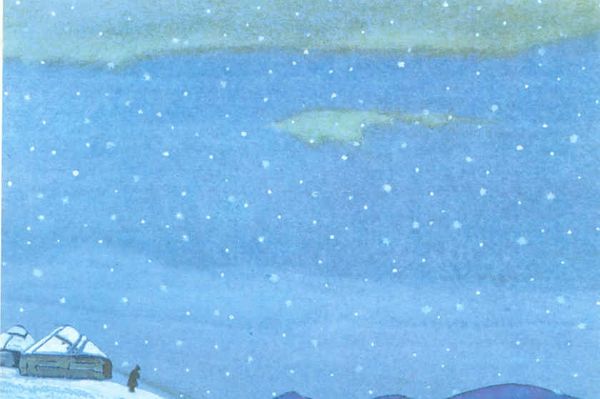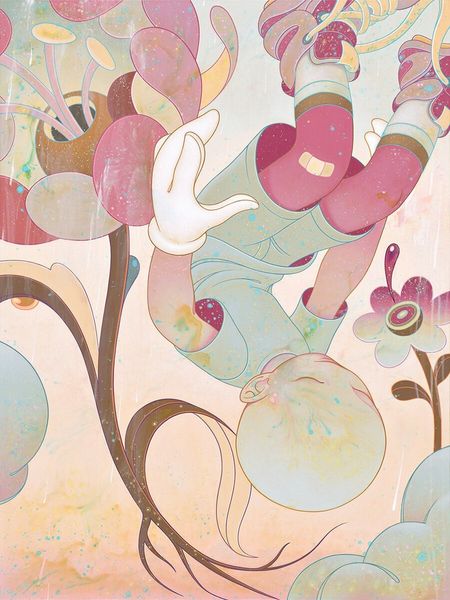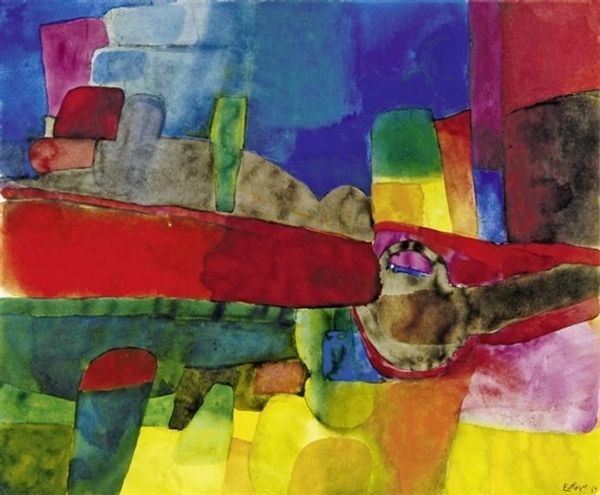
painting, oil-paint
#
portrait
#
painting
#
oil-paint
#
figuration
#
oil painting
#
neo expressionist
#
animal portrait
#
portrait art
Copyright: Stanley Pinker,Fair Use
Curator: Just look at the interplay of scales and shapes in Stanley Pinker’s painting, titled “Man and Ape.” The artwork is oil on canvas, showcasing the artist’s talent for figuration and portraiture. Editor: I find myself immediately struck by the contrast! The palette of earthy browns set against that almost oppressive blue generates an atmosphere of tension, of some latent unease. Curator: Pinker, you see, positions this work at an intersection of the colonial gaze, inviting dialogue about human exceptionalism, dominance, and perhaps the inherent violence embedded within these historical narratives. We must consider how such images were deployed within colonial discourse to justify power dynamics. Editor: Absolutely, that colonial frame looms large. But consider how Pinker renders these figures with flattened planes, like archetypes more than individuals. They become carriers for accumulated meaning around humanity's relationship to nature, almost hieroglyphic in function. I'm intrigued by the repeated circular and semi-circular motifs... almost echoes? Curator: Exactly! He deliberately destabilizes the perceived hierarchy through the composition. Look how the "Ape" occupies almost half the painting while the man appears to be in a sort of satellite perspective! Who then is observing who? Editor: It almost flips the script on the established hierarchy, hinting at the ape observing human folly. Curator: Furthermore, let's discuss the role of representation in constructing notions of identity, specifically, colonial othering through the male and simian forms represented in this piece. This painting then becomes not just about what is depicted but about who is given the power to depict. Editor: An important consideration for our audiences. In contemplating “Man and Ape”, what really strikes me is its enduring power as a psychological space to contend with human origins, our ethical obligations to other species, and visual traditions that reinforce narratives of power. Curator: I find it necessary to challenge us to consider whose narratives are most readily accepted and how artistic production, especially representations like this, can disrupt those comfortable understandings. Editor: Well said, through engaging such images with these sorts of complex considerations, viewers may see within this artwork what resonates, provokes, or potentially invites us toward deeper self-awareness.
Comments
No comments
Be the first to comment and join the conversation on the ultimate creative platform.
